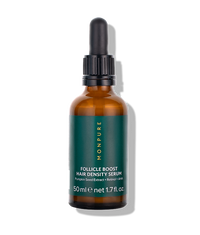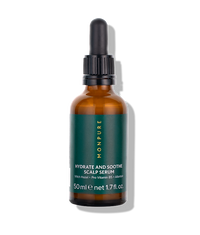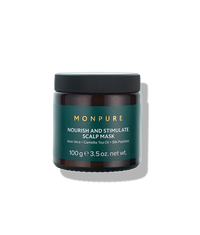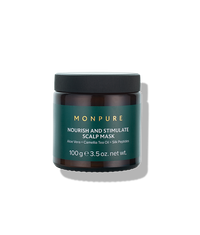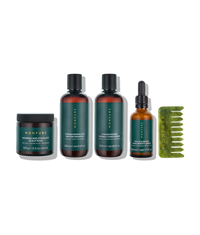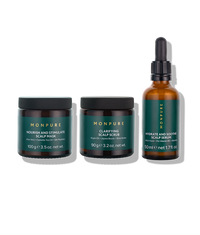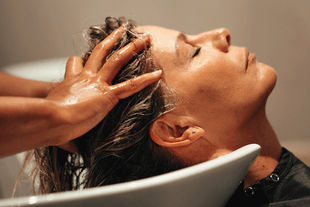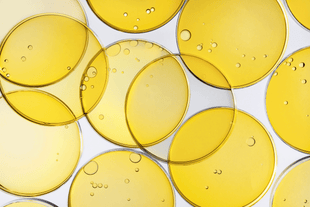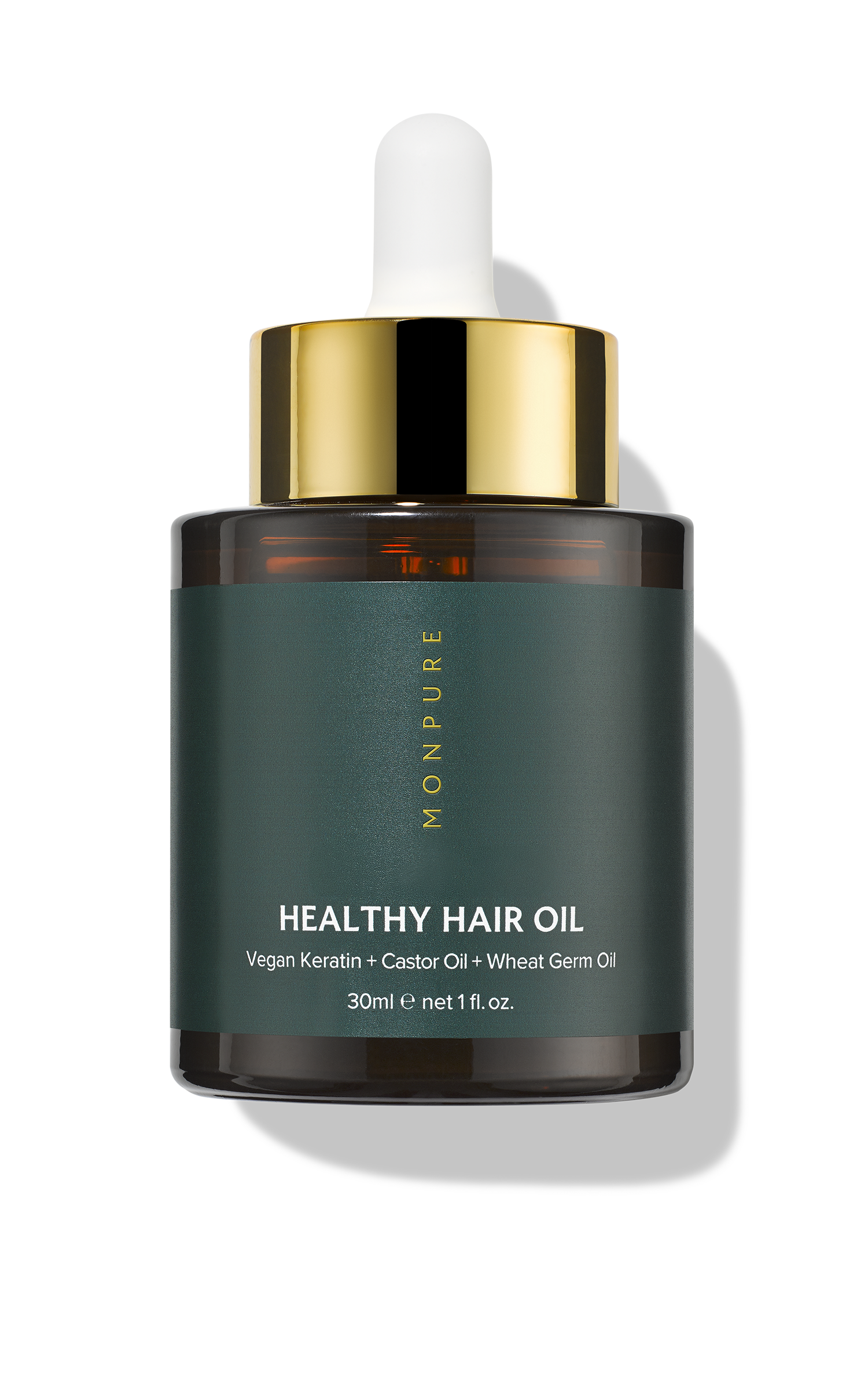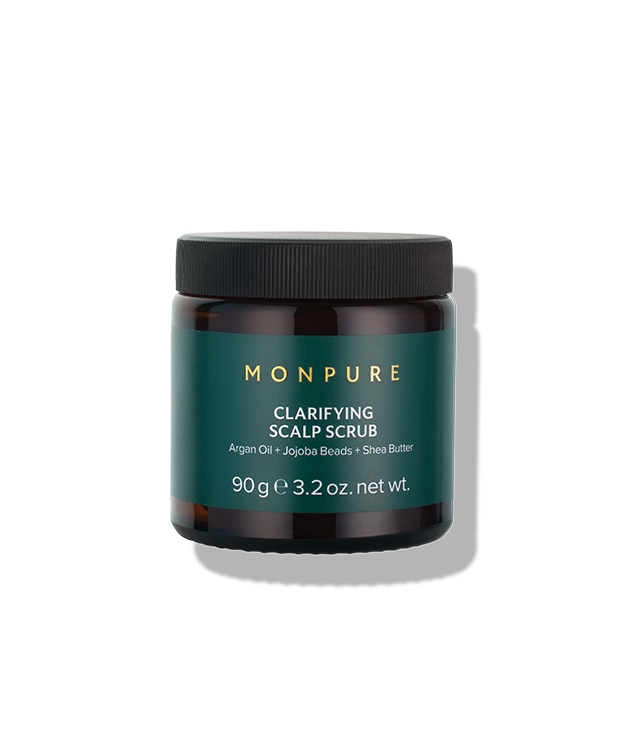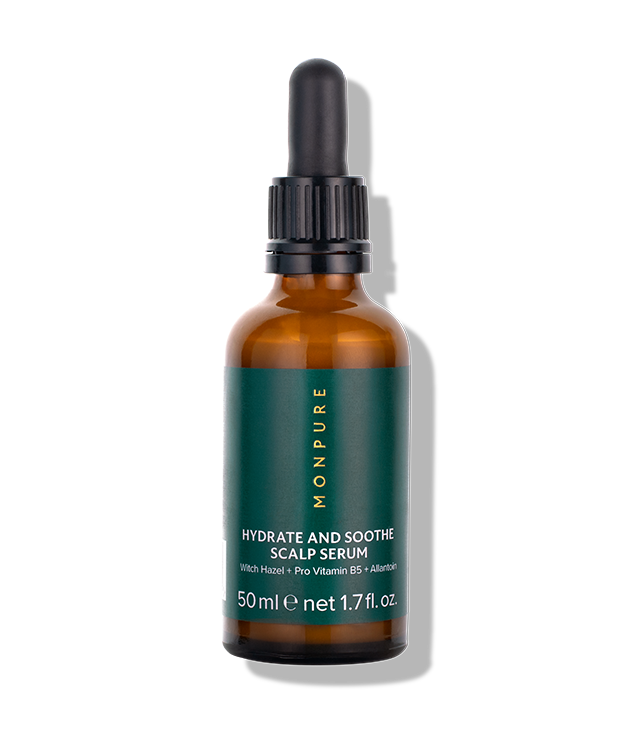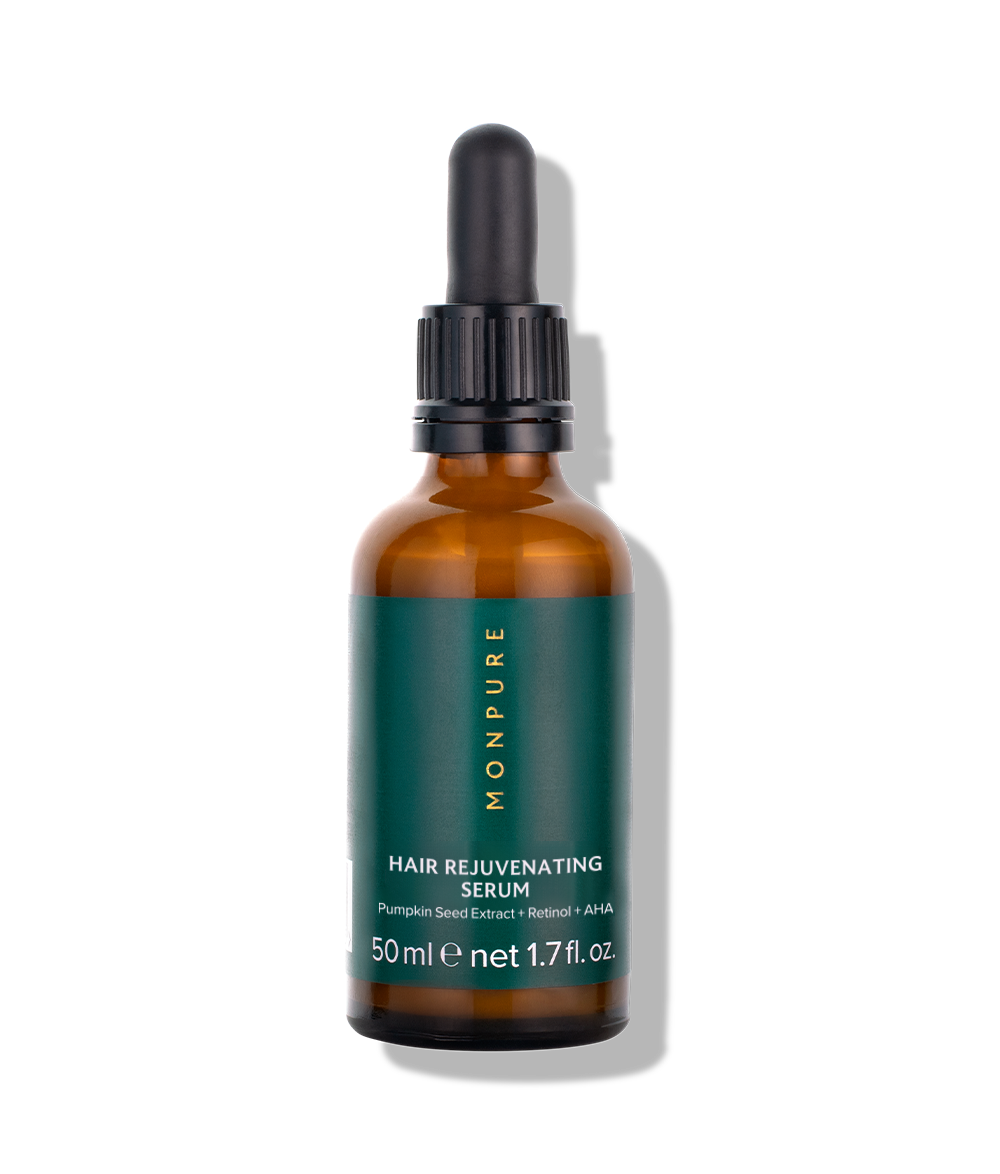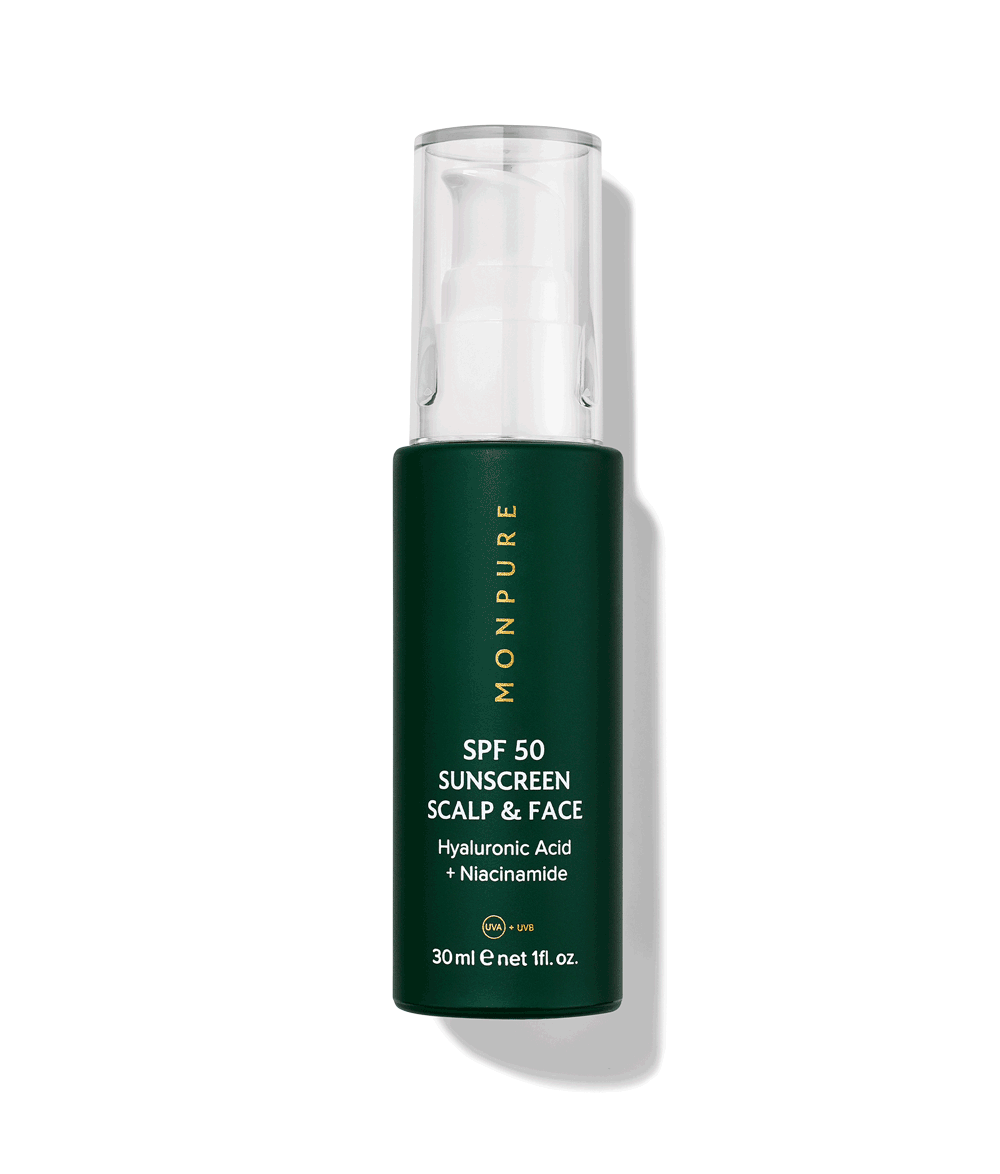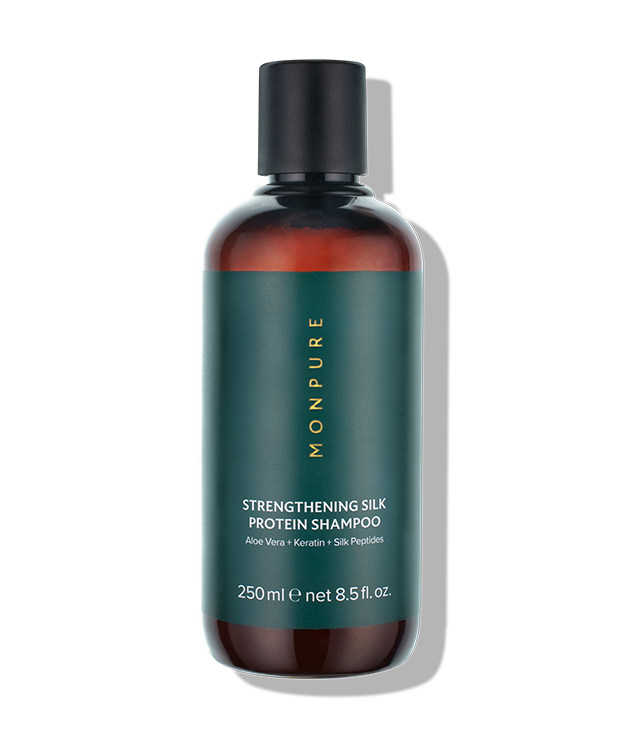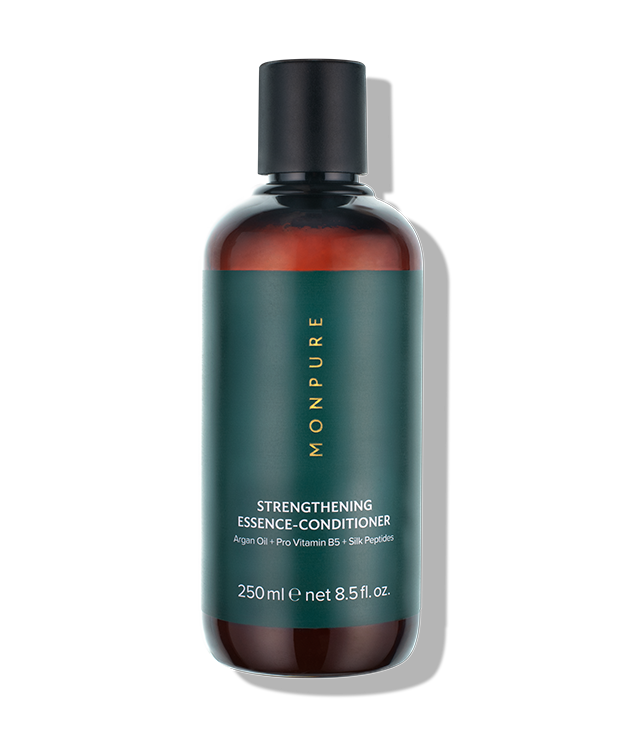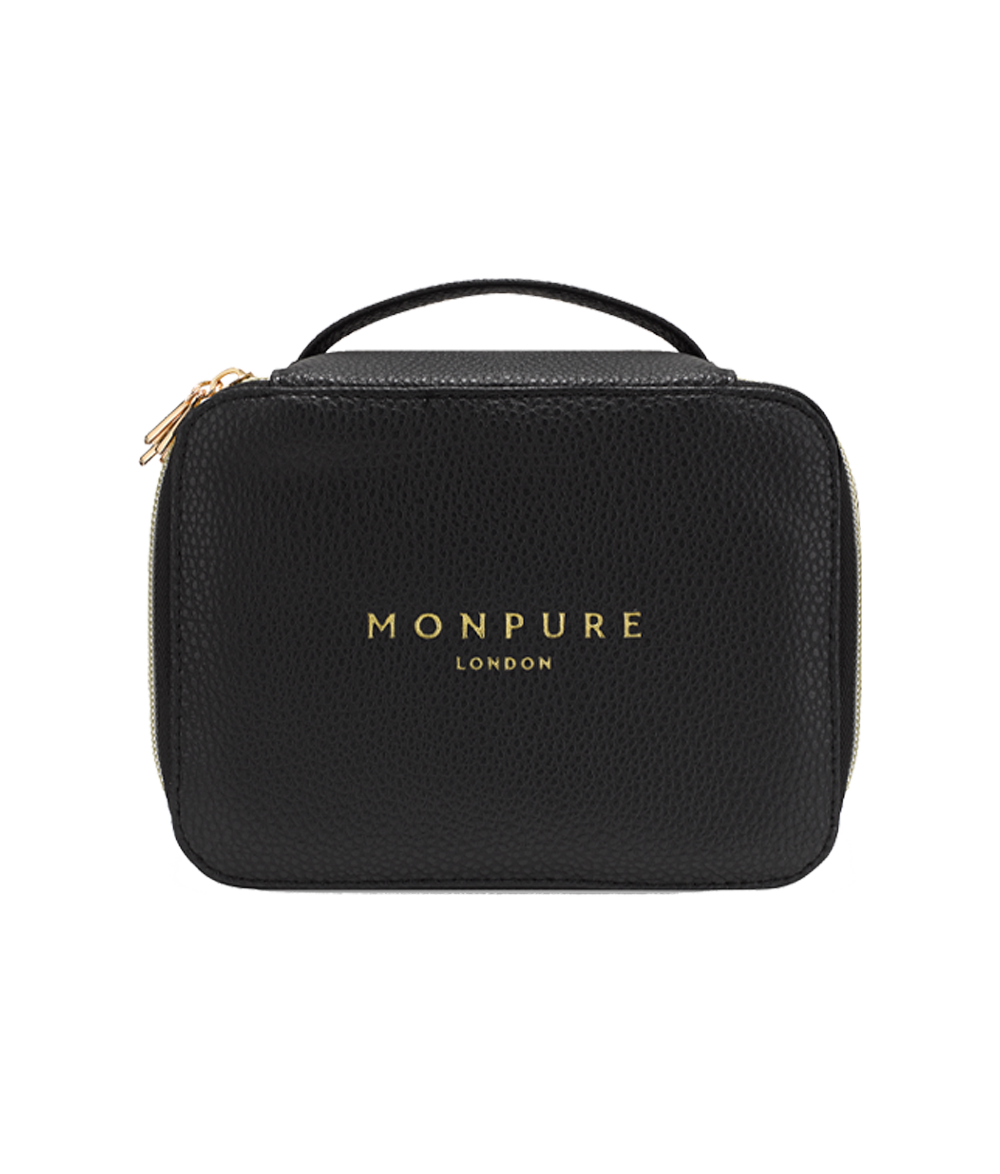Greasy roots and an oily scalp are sure-fire ways to ruin any good hair day, leaving hair looking limp, heavy and dirty. To make matters worse, an oily scalp can lead to scalp itching and irritation, and even conditions such as scalp acne or seborrheic dermatitis. Washing your hair daily to combat greasy roots is just a temporary solution. It is essential that you understand the science and get to the bottom of what causes an oily scalp and how to effectively treat it.
What is an Oily Scalp?
The natural oil in your skin and scalp is called ‘sebum’. Sebum is an oily, waxy substance that is produced by the sebaceous glands that sit as the base of each hair follicle. Sebum is a complex blend of fatty acids, triglycerides, wax esters, squalane and cholesterol. Sebum naturally functions to coat, moisturise and protect the skin all over the body, including the scalp. The scalp contains the highest concentration of sebaceous glands, with each gland secreting sebum onto its surface via follicular ducts.
Sebum accumulation, or an oily scalp, occurs when too much sebum is produced and excreted by the sebaceous glands - or when sebum builds up on the scalp due to a lack of frequent cleansing. Sebum accumulation can cause scalp irritation, redness and inflammation of the hair follicles.
Causes of an Oily Scalp
- Metabolic disorders: Unhealthy saturated and trans fats in your diet impact the metabolism and can spur on increased sebum production.
- Hormone imbalances: Imbalances in both thyroid and sex hormones can lead to increased sebum production.
- Poor scalp hygiene: Washing the scalp and hair too infrequently can result in product build-up, sebum accumulation and inflammation that may even slow hair growth. It is also essential to steer clear of products that clog the follicles and strip the scalp (think sulphates and silicone-laden products).
- Microorganisms: Bacteria and fungi (such as demodex folliculorum) can cause inflammation, scalp build up and sebum accumulation.
Overproduction of sebum
Male hormones, called androgens, work to regulate overall sebum production. The androgen hormone responsible for hair thinning, called DHT, also directly triggers sebum production. DHT targets the sebaceous glands that exist at the base of the hair follicle, causing them to overproduce sebum. In fact, research suggests that DHT is the principal androgen that causes sebum production.
Sebum is also a carrier of DHT, so a build-up of sebum can also exacerbate the amount of DHT on the scalp, contributing to hair thinning.
Oily scalp conditions
Folliculitis
Sebum build-up on the scalp can clog the hair follicles, which can cause folliculitis. Folliculitis is an inflammation of the follicles that, if left untreated, can lead to infection in the hair follicle from bacteria. This inflammation can also affect the hair growth cycle and prohibit healthy hair growth.
Follicles that become clogged or congested with excess sebum can result in inflammation in the hair follicle, and the formation of bumps, whiteheads or blackheads on the scalp.
The word ‘seborrheic’ in this condition refers to the sebaceous glands, the oil-producing glands attached to the hair follicles. Specifically, it speaks to the areas of the body that produce the most sebum. People with oily skin and naturally high sebum production are more prone to developing seborrheic dermatitis. Symptoms of seborrheic dermatitis include dandruff, itching, dry scalp, scalp redness and folliculitis.
Hair Loss and Thinning
Overproduction of sebum leads to follicle blockages, inflammation and build-up. This can lead to increased hair thinning or shedding, as hair follicle health is disrupted and healthy hair growth is inhibited. Sebum is also a carrier of DHT, so a build-up of sebum also exacerbates the amount of hair-thinning DHT on the scalp, contributing to follicular miniaturisation, fallout and hormonal fluctuations on the scalp-skin.
Oily scalp treatment
The first step to curbing your sebum buildup is switching out your heavy sulphate and silicone-based hair products for lightweight, high-performance natural ingredients. These harsh and heavy formulas may be contributing to hair follicle congestion and inflammation, as well as stripping the scalp of its natural and healthy oil homeostasis - ultimately exacerbating the overproduction of sebum on the scalp.
One of the key solutions in treating an oily scalp is going beyond shampoo and introducing exfoliation into your routine. Not only does exfoliation sweep away the excess sebum clogging your follicles, boost cellular renewal and soften the scalp; exfoliation also allows other healthy ingredients to deeply penetrate into the scalp and work more effectively.
The Clarifying Scalp Scrub
The Clarifying Scalp Scrub is a kind, moisturising physical exfoliant that is perfect for unclogging the follicles and cleansing the scalp before shampooing. It uses biodegradable jojoba beads to gently slough away build-up, sebum and residue from the surface of the scalp while also polishing and refining the scalp’s texture. Argan oil and shea butter work to regulate moisture on the scalp, instead of stripping it, and regenerate the surface to boost overall scalp health.
MONPURE Expert Tip: Use the Clarifying Scalp Scrub as a weekly treatment to break down the oils and build-up that shampoo misses. This will allow you to extend your hair wash cycle while also ensuring your scalp remains balanced, clean and healthy.
The Power of Skincare Acids
Gentle acids work to loosen up the sebum and build-up that contribute to a myriad of scalp issues. As a holy grail skincare ingredient, retinol works to decongest the follicles of excess oils, rebalance the scalp and regulate overall sebum production. Lactic acid (AHAs) exfoliates the surface of the scalp, decongests oil-ridden hair follicles and holds antibacterial properties to ward off the microbes that may be more prevalent on an oily scalp. Retinol and lactic acid can be found in MONPURE’s Follicle Boost Hair Density Serum.
Salicylic acid is another hero ingredient for an oily scalp. The beta hydroxy acid (BHA) is oil soluble, meaning it can deeply penetrate the scalp and target the ‘hard-to-reach’ levels of the skin. It is also keratolytic, meaning it aids in exfoliation and soothes inflammation caused by sebum build-up. Salicylic acid can be found in MONPURE’s Hydrate and Soothe Scalp Serum.
Getting to grips with greasy roots and an oily scalp requires a combination of dietary changes, hormonal considerations and a bit of a routine revamp. By introducing gentle exfoliation and skincare acids into your haircare routine, your hair and scalp are sure to feel cleaner, healthier and bouncier from the root. Keep your scalp clear, balanced and hydrated with MONPURE’s range of high-performance products that target healthy hair from the scalp.

